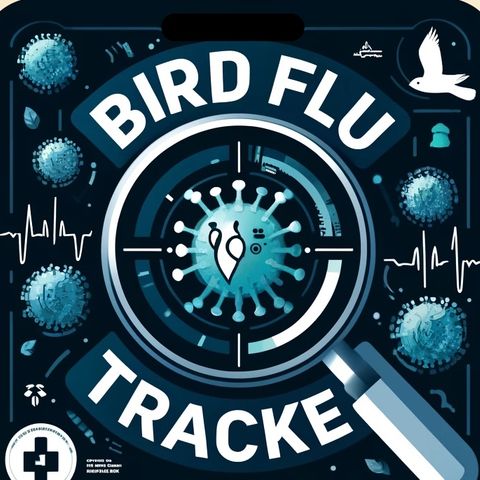Bird Flu update for 11-08-2024

Descarga y escucha en cualquier lugar
Descarga tus episodios favoritos y disfrútalos, ¡dondequiera que estés! Regístrate o inicia sesión ahora para acceder a la escucha sin conexión.
Bird Flu update for 11-08-2024
Esta transcripción es generada automáticamente. Ten en cuenta que no se garantiza una precisión absoluta.
Descripción
In an unprecedented move marked by growing concerns over the reach of zoonotic diseases, the United States Department of Agriculture (USDA) has announced plans to initiate bulk testing of milk...
mostra másThe detection of H5N1 in dairy cattle sparked significant alarm across the agricultural and health sectors, challenging the previously held assumption that bird flu only posed a risk to avian species. This development underscores the adaptable and dangerous nature of H5N1, a virus notorious for its high mortality rates in birds and its potential to infect humans.
The USDA's strategy involves comprehensive testing procedures targeting milk supplies directly from farms where the infected cattle were identified. This proactive approach aims to ensure that the milk remains safe for consumption and to prevent any possible transmission of the virus through dairy products. While milk and dairy products are generally not associated with transmitting the bird flu to humans according to health experts, the USDA is taking no chances, reinforcing measures to safeguard public health.
Meanwhile, state officials have rushed to reassure the public and stakeholders within the dairy industry. They emphasize that stringent biosecurity measures are in place and that the risk of bird flu affecting humans through the consumption of dairy products remains extremely low. The primary concern, however, revolves around the health implications for the livestock and the potential for broader transmission within and between species.
This action follows a comprehensive surveillance program that flagged this unusual transmission of H5N1 to cattle. Normally, bird flu outbreaks are managed with strict quarantines and culling procedures focused on bird populations. The jump to mammals signifies a troubling evolution in the behavior of the virus, propelling government agencies and scientific communities to revisit and revise their disease control strategies.
Further investigations are aimed at understanding the mechanics of this cross-species transmission, assessing the mutation of the virus, and implementing robust controls to curb the spread. Researchers and veterinarians are working closely, monitoring livestock and wildlife to detect any new instances of the disease swiftly.
The spreading of H5N1 among cattle – and the subsequent response by the USDA – points to growing concerns about the interconnectivity between human, animal, and environmental health. As the situation develops, both national and global observers are closely watching how these efforts unfold, hoping that early interventions will prevent a wider health crisis.
For now, the dairy industry is under tight scrutiny, and consumers are urged to stay informed about updates from health officials and the USDA as they navigate this challenging situation. The importance of maintaining confidence in dairy safety and overall food security has become more pivotal than ever amid these complex challenges posed by shared diseases among animals and humans.
Información
| Autor | QP-3 |
| Organización | William Corbin |
| Página web | - |
| Etiquetas |
Copyright 2024 - Spreaker Inc. an iHeartMedia Company
